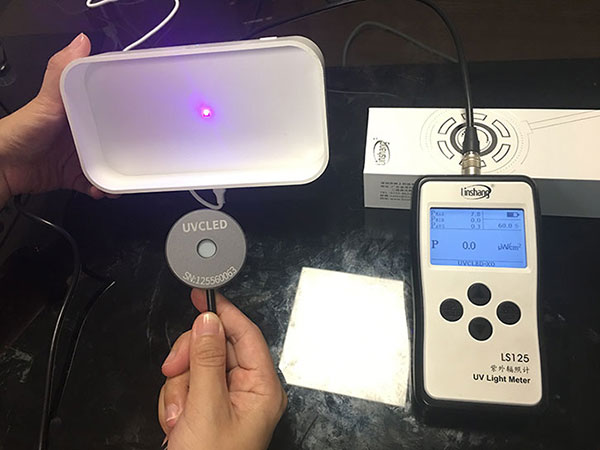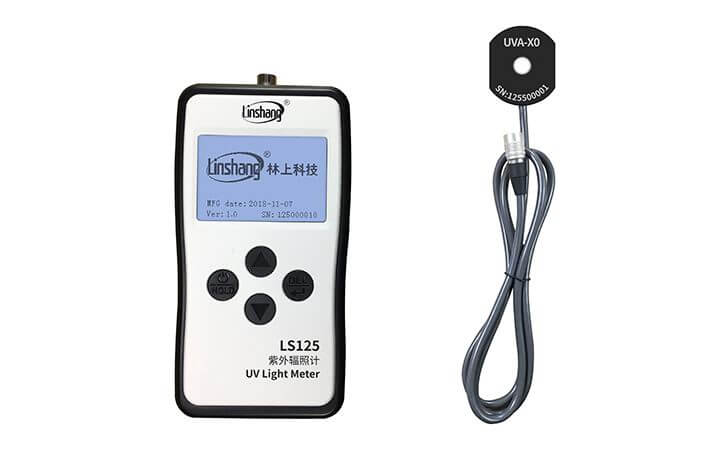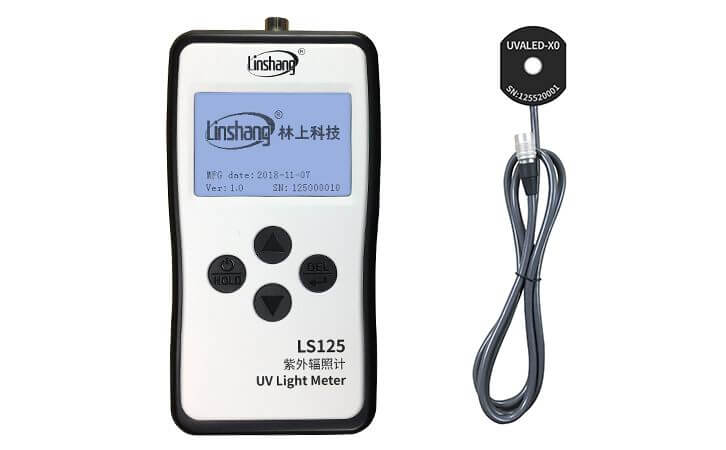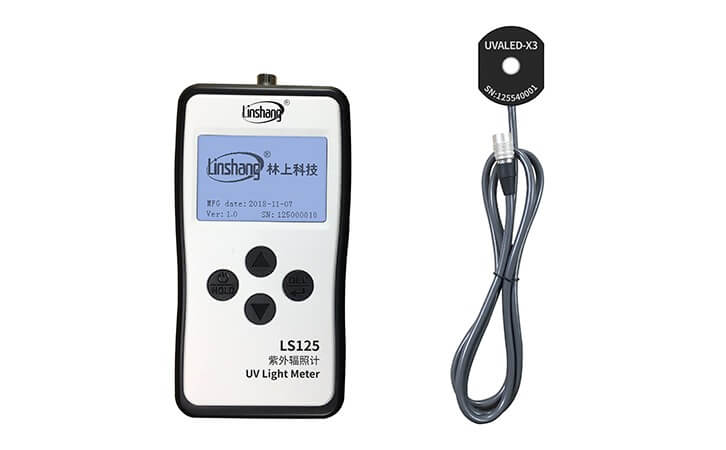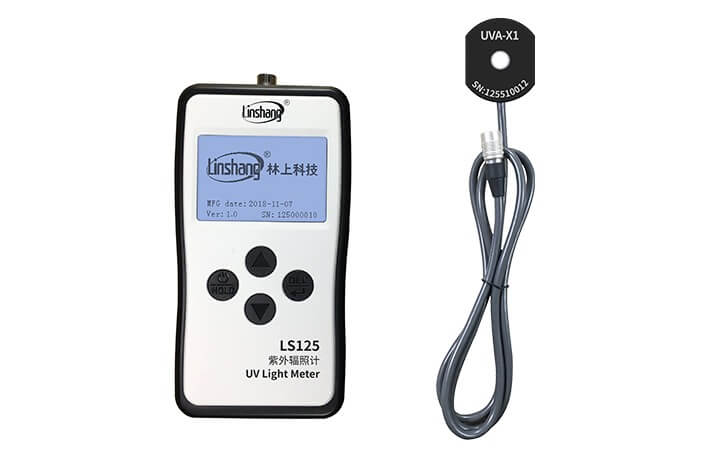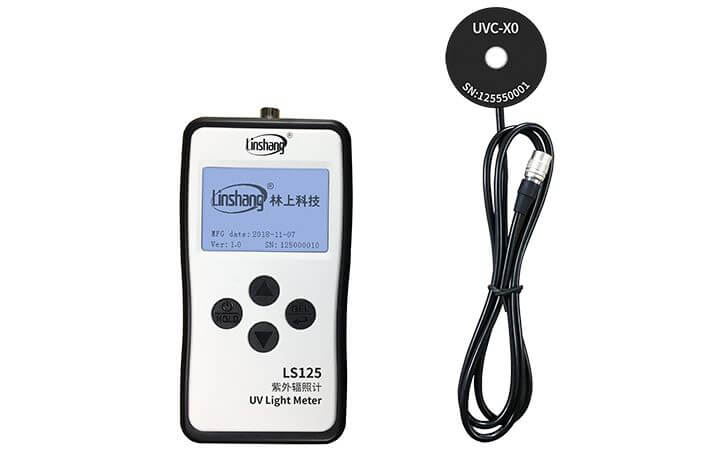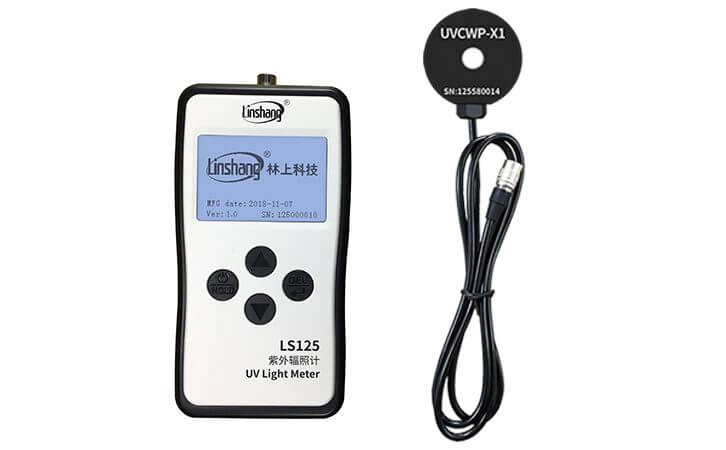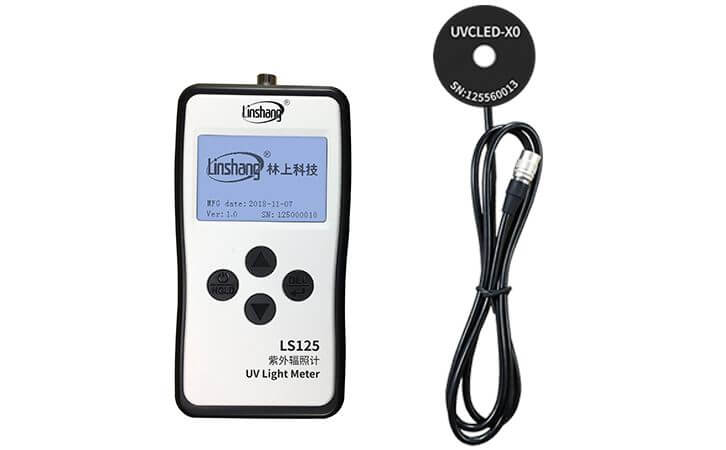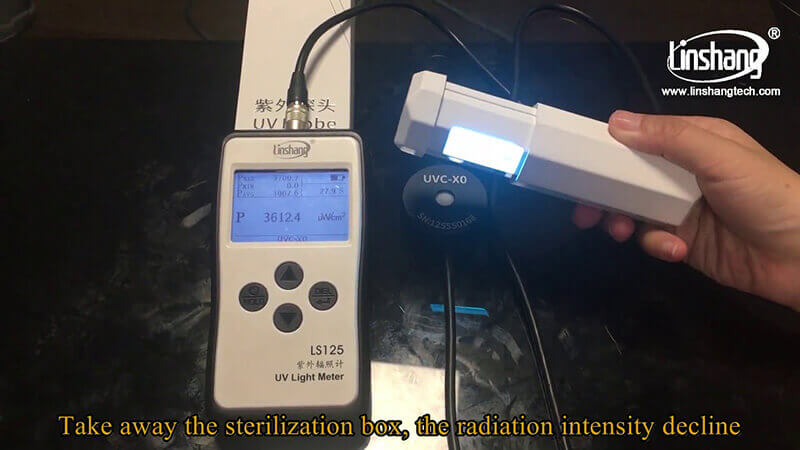Multi-probe UV Light Tester Application and Usage
I. The birth of multi-probe UV light tester
1. Division of ultraviolet band
Ultraviolet rays are generally divided into three bands, UVA, UVB and UVC according to different wavelengths. The specific divisions are as follows: UVA wavelength is 320-400 nm, UVB wavelength is 280-320 nm and UVC wavelength is 100-280 nm. Different UV wavelengths and intensities have different applications.
UVA has a high market share. The most important application markets are curing, as well as nail art, ink printing, copiers, printing machines, shadowless adhesive curing, insect trapping and other fields. UVA also has applications in commercial lighting. UVC and UVB are mainly used for disinfection, sterilization, medical light therapy, etc. UVB is mainly used for medical, while UVC is mainly used for sterilization and disinfection.

2. Necessity of measuring the ultraviolet radiation intensity
The radiation intensity of all the ultraviolet light sources will attenuate with the increase of the using time. The attenuated ultraviolet light source can reach the sterilization effect or curing effect. The irradiation intensity and duration of the UV lamp in use need to be strictly controlled, which requires an UV light tester to detect the intensity of the light source.
3. What is a multi-probe UV light tester?
UV light tester is also called UV tester, UV light intensity meter, etc. It is an instrument specially used to measure the intensity of ultraviolet radiation. UV light testers can be divided into single-channel and multi-probe UV light testers. So many customers do not understand what single-channel and multi-probe UV irradiators mean? What's the difference?
In fact, the so-called single-channel UV light tester can only measure the ultraviolet intensity of a fixed wavelength band. It is relatively simple to use. On the contrary, the multi-probe UV light tester can test the ultraviolet of various bands. For example, Linshang LS125 multi-probe UV light tester can be equipped with 9 probes which can test various ultraviolet bands in UVA, UVB and UVC. The customer's practicality is very strong. If there are multiple ultraviolet light sources, only one host needs to be purchased and then the corresponding probe can be selected.
4. Multi-probe UV light tester principle
The UV light tester can measure the intensity and energy of the received UV. The principle is to convert the received UV rays into an electrical signal and then into a digital signal. The single-chip microcomputer adjusts and records the collected digital signals and calculates the measured power values.
II.Application and selection of multi-probe UV light tester
1. UVA band ultraviolet lamp detection
(1) High-power UVA curing light source detection
High-pressure mercury lamp testing for curing
Compared with the traditional drying technology, the high-pressure mercury lamp curing light source has greatly reduced the time cost and economic cost. The light source has the characteristics of high luminous efficiency, long service life, power saving and low price. It is recommended to use the LS125 multi-probe UV light tester+ UVA-X0 probe. The basic parameters are as follows:
2. Necessity of measuring the ultraviolet radiation intensity
The radiation intensity of all the ultraviolet light sources will attenuate with the increase of the use time. The attenuated ultraviolet light source can’ reach the sterilization effect or curing effect. The irradiation intensity and duration of the ultraviolet lamp in use need to be strictly controlled, which requires an UV light tester to detect the intensity of the light source.
Power measurement range: 0-2000 mW / cm²
Sampling speed: 2048 times / second
Optional units: mW / cm², W / m²
LED light source detection for curing
The curing LED light sources used in curing machines, exposure machines and other equipment can be divided into LED point light sources and LED area light sources. Point light sources have small size, long product life, good uniformity of light intensity and fast curing time , low cost, no mercury, etc. The area light source has the characteristics of soft light output, power saving and natural light.
For UVA LED area light source detection, it is recommended to use LS125 multi-probe UV light tester + UVALED-X0 probe.
For UVA LED point light source detection, it is recommended to use LS125 multi-probe UV light tester + UVALED-X1 probe with a 1mm test aperture.
Power measurement range: 0-20000 mW / cm²
Test aperture:10mm
Optional units: mW / cm², W / cm², W / m²
Power measurement range: 0-20000 mW / cm²
Test aperture:1mm
Optional units: mW / cm², W / cm², W / m²
(2) Low-power UVA curing light source detection
It is recommended to use the LS125 multi-probe UV light tester + UVA-X1 probe for the detection of the irradiation intensity and energy of the low-power UVA curing light source.
Power measurement range: 0-200000 μW / cm²
Sampling speed: 6 times / second
Optional units: μW / cm², mW / cm², W / m²
Power measurement range: 0-200000 μW / cm²
Sampling speed: 6 times / second
Optional units: μW / cm², mW / cm², W / m²
2. UVB band ultraviolet lamp detection
Ultraviolet rays in the UVB band have a erythema effect on the human body, which can promote the metabolism of minerals and the formation of vitamin D in the body. But excessive or long-term exposure can cause skin tanning and cause redness and peeling. UVB light source is commonly used in electric welding arc light, plant growth lamp, reptile lamp, ultraviolet health care lamp and phototherapy lamp for skin disease treatment. It is recommended to use the LS125 multi-probe UV light tester + UVB-X0 probe.
Power measurement range: 0-200000μW / cm²
Sampling speed: 6 times / second
Optional units: μW / cm², mW / cm², W / m²
3. UVC band ultraviolet lamp detection
(1) Detection of germicidal mercury lamp
Ultraviolet disinfection and sterilization are commonly used in hospitals, disease control centers, pharmaceutical factories, food factories, schools, movie theaters, buses, offices, etc. It can not only purify the air but also prevent the spread of germs through the surface of the object or through the air. It is recommended to use the LS125 multi-probe UV light tester + UVC-X0 probe.
Power measurement range: 0-200000 μW / cm²
Sampling speed: 6 times / second
Optional units: μW / cm², mW / cm², W / m²
(2) Detection of high-power germicidal lamps for water treatment
Ultraviolet sterilization also has applications in water treatment, including not only urban water supply treatment, drinking water treatment, pure water treatment, wastewater treatment, but also farm water treatment. It is recommended to use the LS125 multi-probe UV light tester and UVCWP-X1 probe: dedicated for high-power water treatment sterilization lamps, waterproof to 1 meter. The basic parameters are as follows:
Power measurement range: 0-200000 μW / cm²
Sampling speed: 6 times / second
Optional units: μW / cm², mW / cm², W / m²
(3) LED ultraviolet germicidal lamp detection
LED ultraviolet sterilization lamp is widely used in various small appliances disinfection, air sterilization, LED deep ultraviolet toothbrush sterilizer, food and surface sterilization of objects. It has the characteristics of long service life, energy saving and high efficiency.
Power measurement range: 0-200000μW / cm²
Sampling speed: 6 times / second
Optional units: μW / cm², mW / cm², W / m²
III. How do you use the multi-probe UV meter?
Now , we use the multi-probe UV light tester 125 + UVC probe as an example to demonstrate the use method:
1. UVC meter setting
The instrument can be set to automatically shut down, display energy value, select the frequency of power supply and select the unit of measurement. The units used for UV light testers are generally: μW / cm², mW / cm², W / m². The general unit of the UV light tester used in the detection of disinfection and sterilization lamps is μW / cm². The unit of the UV light tester used in the ultraviolet curing industry is generally mW / cm².

2. How do you use the multi-probe UV meter?
After the instrument is set up, it will directly enter the measurement interface.
When the ultraviolet light source is irradiated on the probe, the real-time power value, energy accumulation value, power maximum value, minimum value, average value and measurement duration of the test will be displayed on the interface.
hort press the "HOLD" button and the test data will be saved, press the up and down buttons to query the historical saved data.
IV.Multi-probe UV light tester maintenance
The recommended calibration period for the UV light tester is one year.
ress the button to shut down when not in use. Then put it in a special packing box for proper storage to avoid contamination of the photosensitive part of the probe.
Avoid contact with corrosive materials. The ultraviolet probe is very sensitive to changes in humidity, the multi-probe ultraviolet irradiation timing is not required for a long time. And the probe is stored in a low humidity environment.
